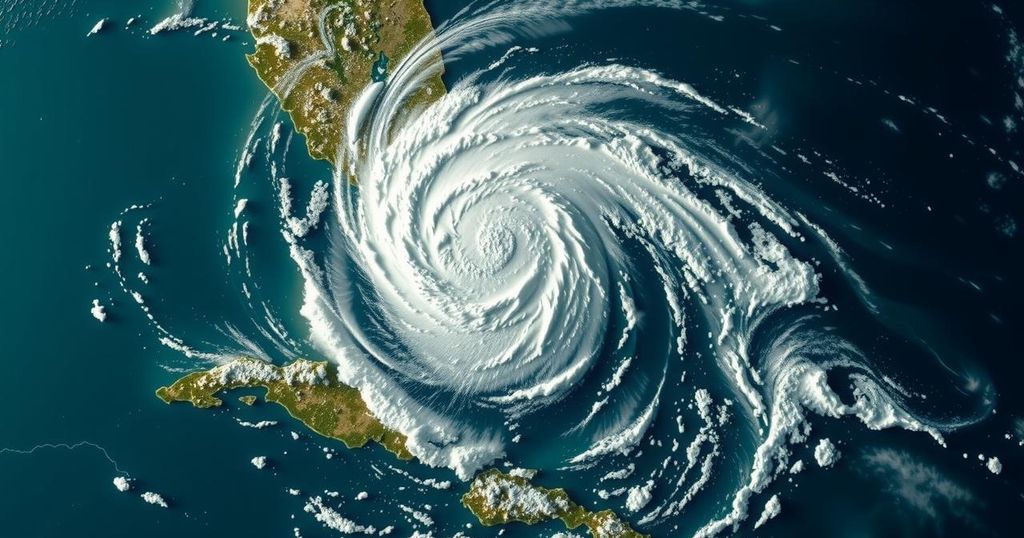Weather
World news
ALQUIZAR, ARIEL FERNANDEZ, ASIA, BRAZIL, CUBA, ESPINOSA, HURRICANE, HURRICANE BERYL, HURRICANE SEASON, MEXICO, MIAMI, NATIONAL HURRICANE CENTER, NATURAL DISASTER, NATURAL DISASTERS, NORTH AMERICA, OS, OSVALDO ANGULO, PHILIPPINES, PROGRESO, RAFAEL, RAMON ESPINOSA, SOUTH AMERICA, UNITED STATES
Lena Nguyen
0 Comments
Hurricane Rafael Causes Widespread Destruction in Cuba Before Entering Gulf
Hurricane Rafael struck Cuba on November 7, 2024, as a Category 3 hurricane, causing severe destruction, power outages, and evacuations. It is currently moving through the Gulf of Mexico as a Category 2 storm, with forecasts predicting further weakening. Despite recovery efforts, many residents remain without power, following a history of energy issues on the island.
Hurricane Rafael made a significant impact as it approached Cuba on November 7, 2024, making landfall with sustained winds classified as a powerful Category 3 storm. The hurricane resulted in widespread devastation, causing the power grid to fail and damaging homes across the region. Upon transitioning into the Gulf of Mexico, the storm was downgraded to a Category 2 hurricane, located 230 miles north-northeast of Progreso, Mexico, with maximum sustained winds of 110 mph and moving northwest at 9 mph. Meteorologists reported that although the hurricane was predicted to weaken, it might create hazardous surf conditions in the Gulf.
Hurricanes are severe weather events that are characterized by strong winds and heavy rainfall, often leading to catastrophic damage. In recent weeks, the Caribbean experienced several storms, culminating with Hurricane Rafael’s landfall in Cuba. This hurricane follows a series of energy shortages in the region, significantly compounding the challenges faced by local communities. The impact of Rafael underscores the vulnerabilities of coastal regions to severe weather, especially in areas already grappling with energy crises and infrastructural issues.
In summary, Hurricane Rafael demonstrated its devastating power as it swept through Cuba, leading to extensive damage, power outages, and community evacuations. The storm’s trajectory suggested a potential weakening as it moved into the Gulf of Mexico, yet its effects lingered with hazardous conditions anticipated along coastal areas. Authorities must be vigilant in preparing for such phenomena, especially in regions that are susceptible to multifaceted challenges such as energy crises and natural disasters.
Original Source: apnews.com




Post Comment